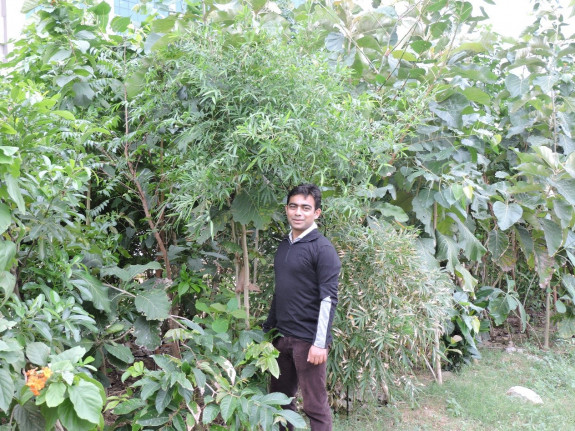Tiny Forest India

Profile: Shubhendu Sharma
Organization: Afforestt India
Email address: info@afforestt.com
Telephone number: +91-9242495757
What was your personal motivation to plant your first or your favourite forest?
Shubhendu: I met Dr. Akira Miyawaki in December 2008. He showed me some pictures of his work and looking at them I felt so moved that I decided to join his team as a volunteer. 6 months later we made a forest of 30,000 trees in our factory! For the next 1,5 years I saw the forest growing and that was one of the greatest experiences of my life. I continued to study the method and prepare the documentation about how to make a forest. In Nov 2010 I made my first forest in the backyard of my house using that documentation.
Can you describe the surroundings of your first forest, what type of place did you convert?
Shubhendu: It was the backyard of my own house, the house that I grew up in. We had a large backyard which had not much vegetation on it, it was kind of a waste land. Today it is full of life.
What were the biggest obstacles in planting this forest?
Shubhendu: Finding the native tree species. That’s a challenge we face even today in any new geography that we work at. The other obstacle was my lack of knowledge of native vegetation. Because of this I planted a few non-native species by mistake.
Who did you cooperate with? How did the local community respond to the forest?
Shubhendu: I worked with my family, neighbours, friends and extended family. Everyone is not happy with the trees, initially they had doubts about the density of the forest and creepy crawlies that the forest would attract.
Did you encounter any rare species of plants and animals? Or which did you never expect to find in your forest?
Shubhendu: Yes! The Grey Indian Hornbill, a rare bird that I never saw in my life before. It was such a bliss to see it from the window of my room on one fine morning. The pair of this bird now stays in our forest for 1-2 months every year.
What did you learn from your first forest?
Shubhendu: First, non-native trees will either die, or dominate your forest. Second, life really comes back if given a chance.
What is the next thing you want to learn about in forest making? Shubhendu: How to make a forest without digging the land.

